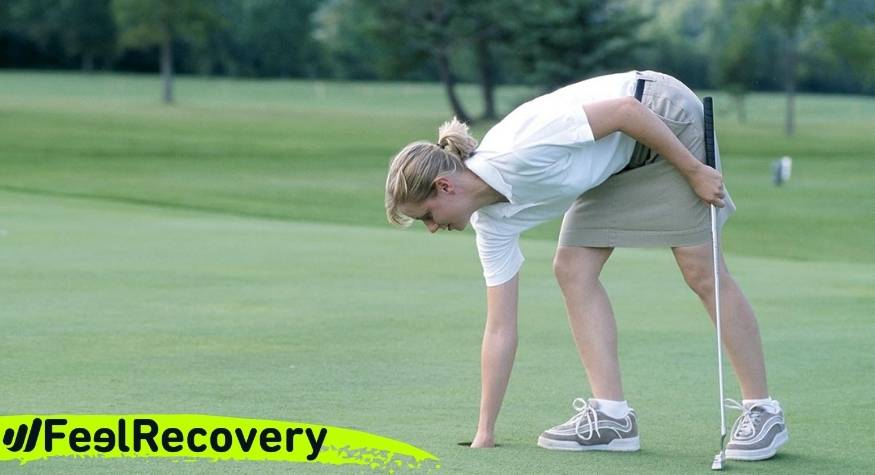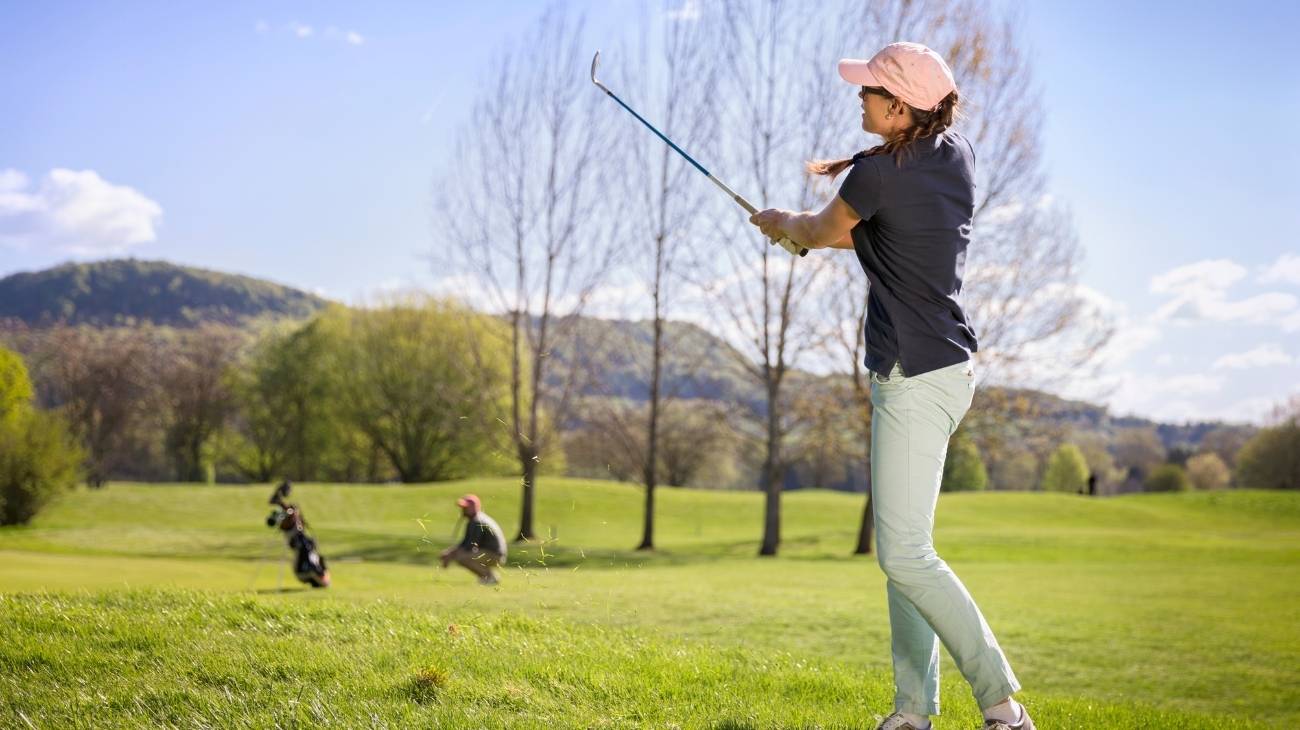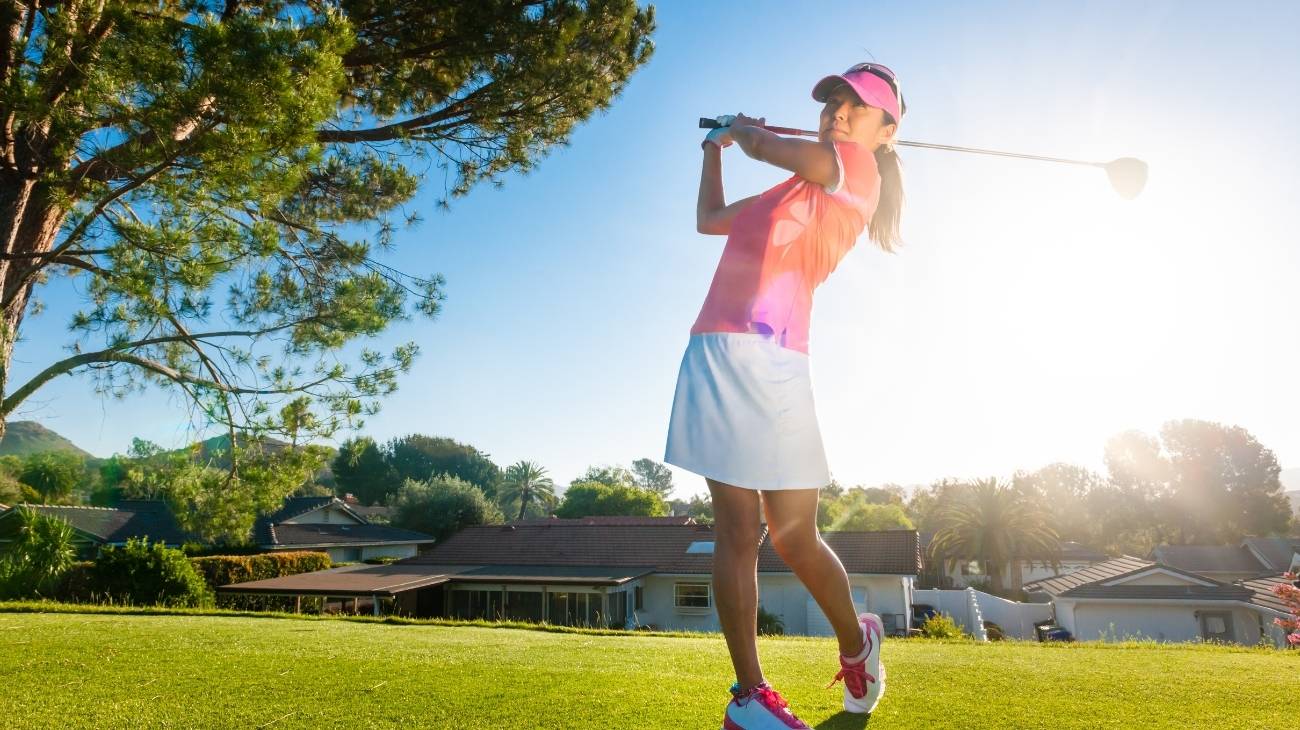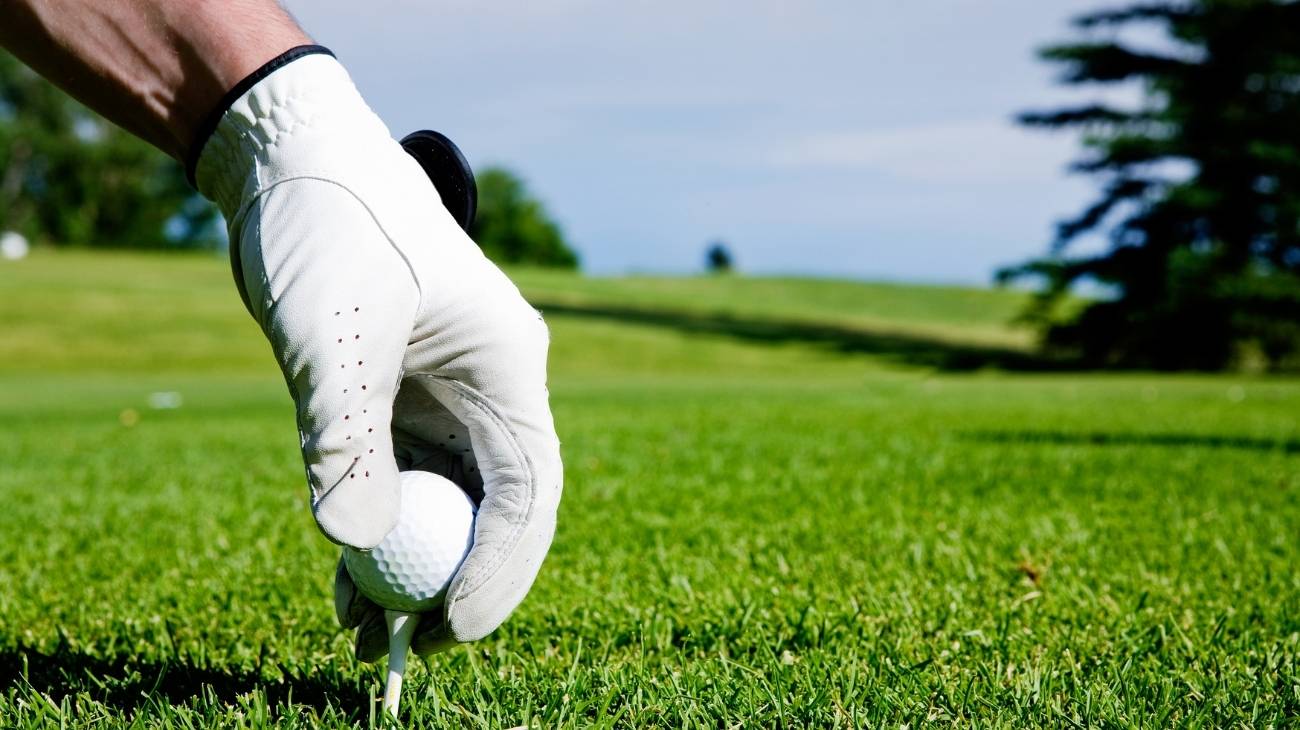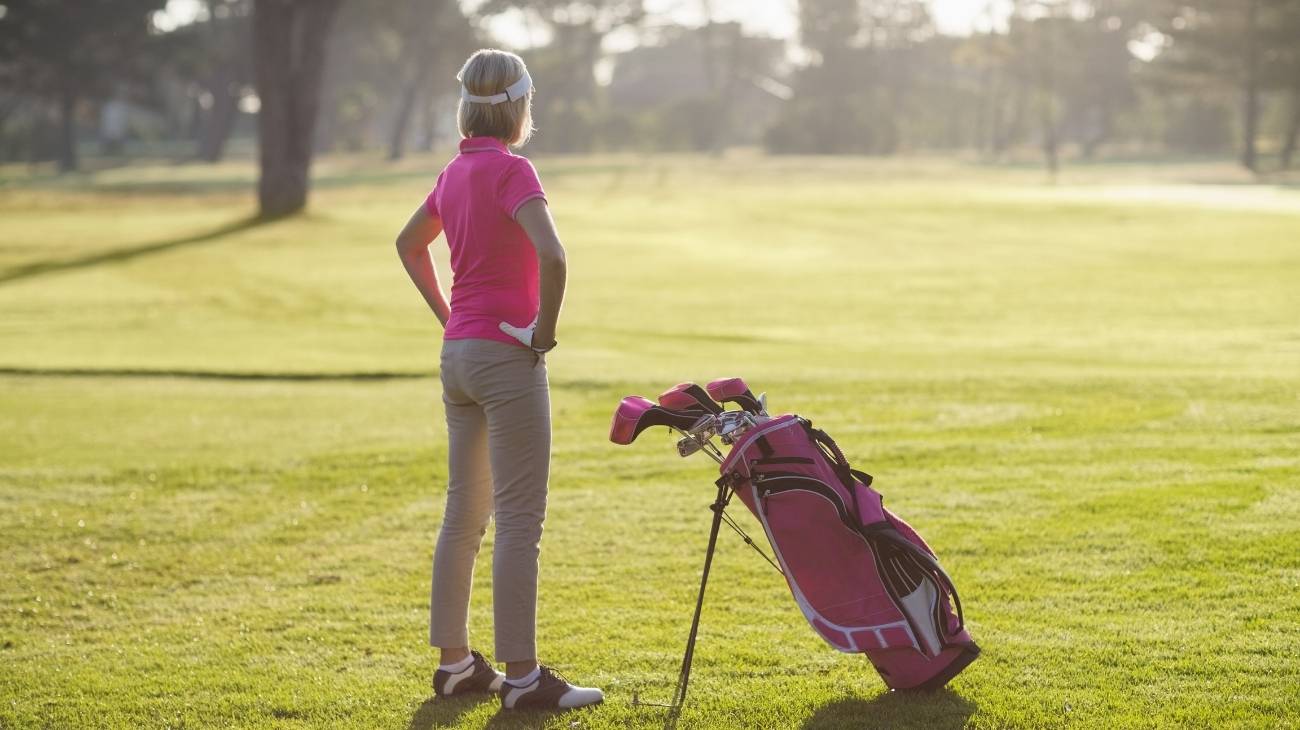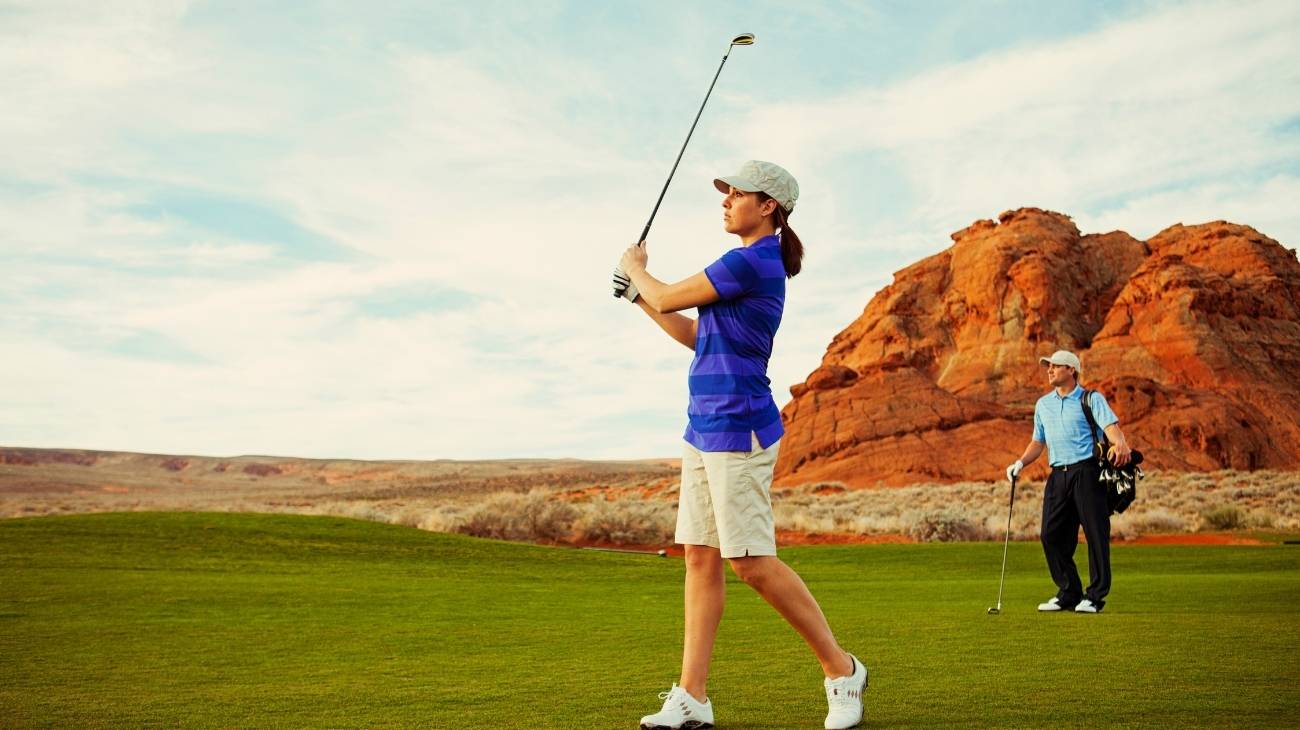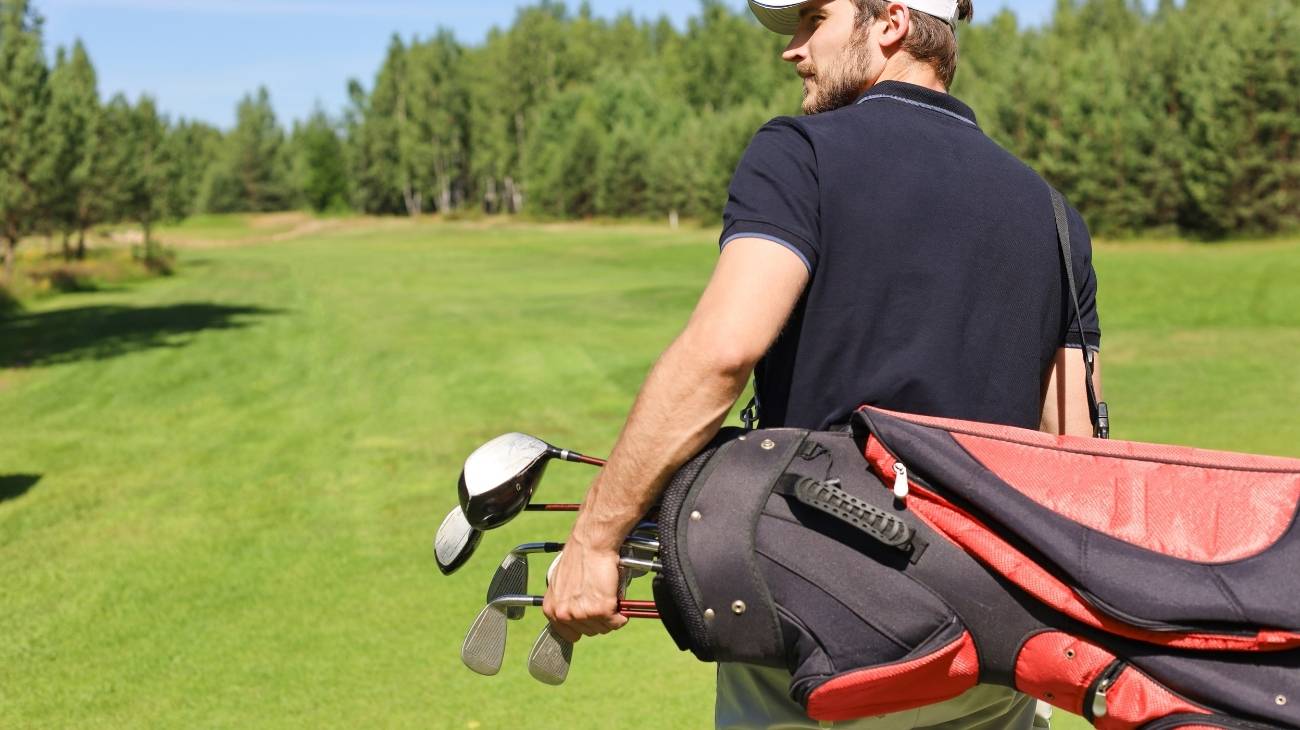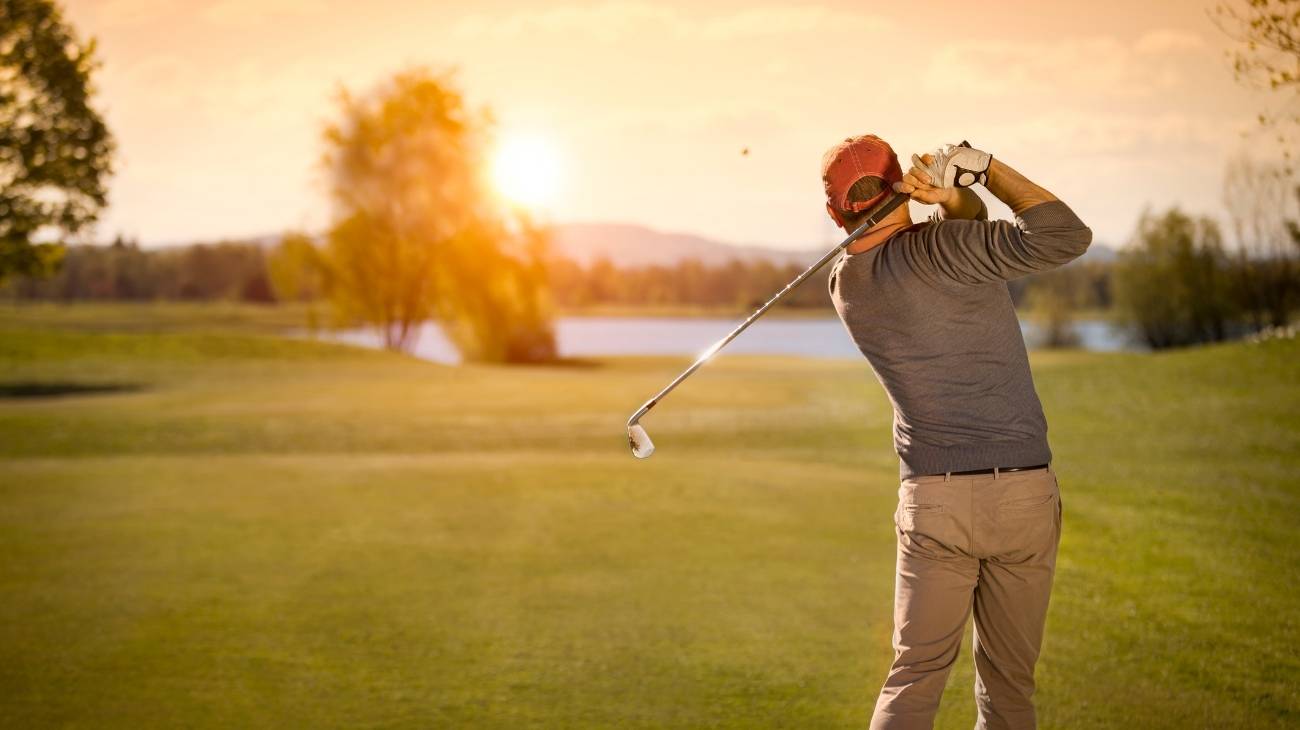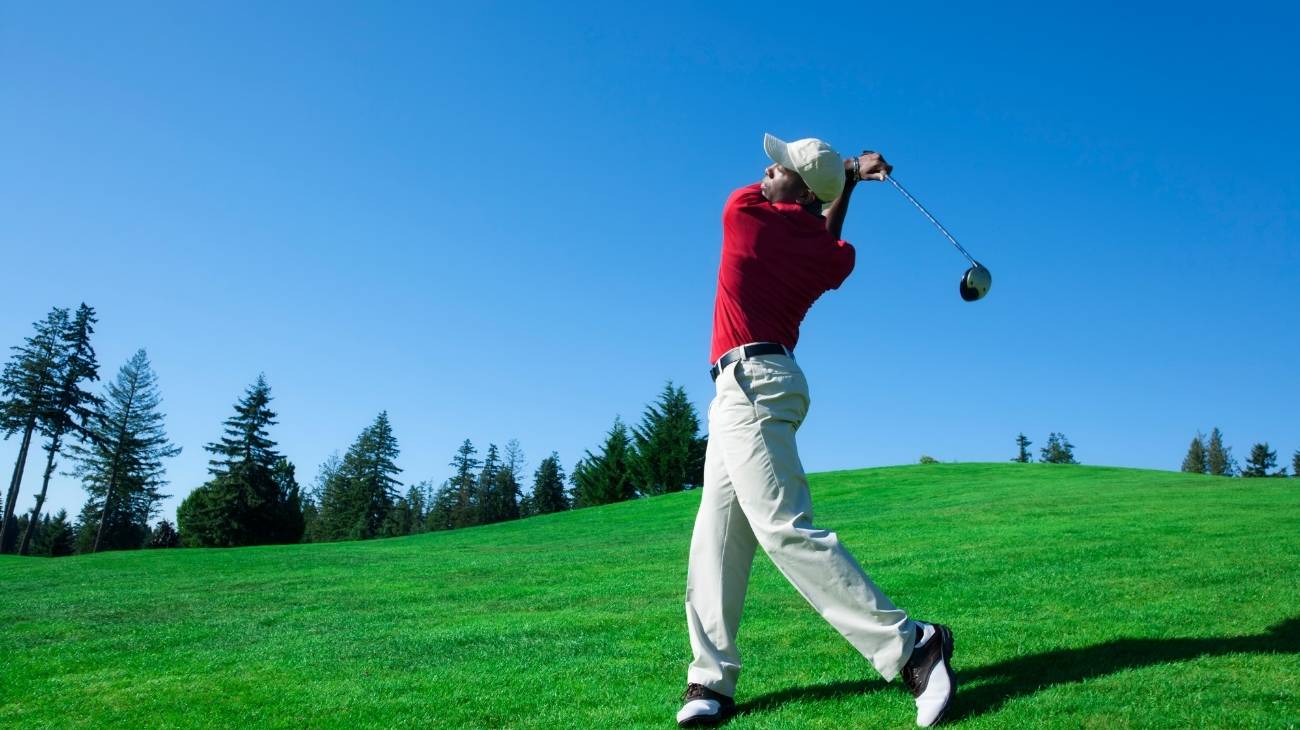All three types of back muscles (obliques, extensors and flexors) are activated by the power of a swing, the speed of which can reach up to 100 mph. On average, in a single game of golf there are between 65 and 70 shots at the ball. Do you think that this does not cause back injuries?
In order for you to understand this reality and learn how to prevent lower back injuries, we will show you which are the most frequent ailments and discomforts in the back and lumbar area when playing golf. You will also learn how to apply the PRICE therapy and which products on the market will help you recover better from an injury.
What are the most common types of lower back and lumbar injuries when playing golf?
In both weekend and professional players, the lower back is at risk, either due to poor technique or extreme repetition.
As the swing leaves after-effects on the back, we leave you with this list of the most frequent injuries when playing golf:
Collapsed disc
The axial load on the back causes the vertebral discs to generate pressure towards the outer wall of the spine, which in itself does not cause discomfort until a nerve is pressed. Pain arises when the discs touch the nerves and become inflamed. This may be due to poor posture or constant twisting of the back with every hit of the ball.
In these cases, it is recommended to check the posture in the swing, including the inclination of the body and the bending of the knees.
Muscle contracture
This is when the muscle fibres become too short as a result of high tension. The twisting of the back causes the pressure to become excessive until it prevents the muscles from relaxing again. Where a contracture occurs, you will feel the skin stiffen and you will need to stay calm if you want the episode to pass as quickly as possible.
After the muscle relaxes, you should wait several hours before continuing to play golf as the area will be tender and is likely to contract again.
Herniated disc
When we don't pay attention to collapses and contractures, all the tension of the body begins to fall more on the vertebral discs until they move, that is to say, they move out of their usual position and it becomes difficult to keep the spine upright.
By the time you reach this level, you've probably already experienced discomfort and pain. If you didn't know, 10% of cases of herniated discs require surgery, so you should be aware of what your back is telling you and if it is possible to leave the match no matter what hole you are in.
Neck pain
As well as pain in the neck when an injury occurs, you are likely to feel pain in the middle and lower back if it is severe. These are injuries to any of the soft tissues such as muscles, ligaments and tendons. It is not necessarily due to a slipped disc.
The neck is very flexible, but the twisting in a swing when we exert more pressure for a long drive will cause these tissues to swell if there has not been a good warm-up.
Spinal osteoarthritis
This is the loss of elasticity in the cartilage of the spine, located between each vertebra. It can occur most commonly in the cervical and lower back. Again, it is a condition that is caused by overworking the spine, perhaps by swinging on uneven terrain that forces you to have a bad posture. When there is no more elasticity in the cartilage, there will not be a good absorption of the tension during the intense movements of golf.
Vertebral fractures
This is quite common in older players and in people with an associated disease, such as osteoporosis, where the loss of bone mass makes them susceptible to injury. Although golf is a sport recommended for people of any age, it is important that each player knows his or her limits and thus has greater control over possible injuries.
Watch out for lower back pain, deformity and problems moving freely.
Best products for recovery from lower back and lumbar injuries in golf
Bestseller
-
Acupressure Mat and Pillow (Black/Gray)
$49.95 -
Acupressure Mat and Pillow (Green/Navy)
$49.95 -
Acupressure Mat and Pillow (Pink/Bordeaux)
$49.95 -
Acupressure Pillow (Black/Gray)
$29.46 -
Acupressure Pillow (Green/Navy)
$29.46 -
Acupressure Pillow (Pink/Bordeaux)
$29.46 -
Back Support Belt (Black)
$34.95 -
Back Support Belt (Green)
$34.95 -
Back Support Belt (Pink)
$34.95 -
Heating Pad for Microwave Classic Bottle Shaped (Hearts)
$19.95 -
Heating Pad for Microwave Classic Bottle Shaped (Oxford)
$19.95 -
Heating Pad for Microwave Classic Bottle Shaped (Sport)
$19.95 -
High Density Foam Roller for Muscle (Black/Gray)
$29.95 -
High Density Foam Roller for Muscle (Green/Navy)
$29.95 -
High Density Foam Roller for Muscle (Pink/Bordeaux)
$29.95 -
Ice Massage Roller Ball (Black)
$39.95 -
Ice Massage Roller Ball (Green)
$39.95 -
Ice Massage Roller Ball (Pink)
$39.95 -
Microwave Heating Pad for Back Pain Relief (Extra Large) (Hearts)
$29.95 -
Microwave Heating Pad for Back Pain Relief (Extra Large) (Oxford)
$29.95 -
Microwave Heating Pad for Back Pain Relief (Extra Large) (Sport)
$29.95 -
Microwave Heating Pad for Neck & Shoulder Pain Relief (Hearts)
$24.95 -
Microwave Heating Pad for Neck & Shoulder Pain Relief (Oxford)
$24.95 -
Microwave Heating Pad for Neck & Shoulder Pain Relief (Sport)
$24.95 -
Microwaveable Heating Pad for Pain Relief (Hearts)
$19.95 -
Microwaveable Heating Pad for Pain Relief (Oxford)
$19.95 -
Microwaveable Heating Pad for Pain Relief (Sport)
$19.95 -
Pack 2 In 1 Foam Roller High + Soft Density (Black/Gray)
$29.95 -
Pack 2 In 1 Foam Roller High + Soft Density (Green/Navy)
$29.95 -
Pack 2 In 1 Foam Roller High + Soft Density (Pink/Bordeaux)
$29.95 -
Sacroiliac Support Belt (Black)
$24.95 -
Sacroiliac Support Belt (Green)
$24.95 -
Sacroiliac Support Belt (Pink)
$24.95 -
Soft Density Foam Roller for Recovery (Black)
$29.95 -
Soft Density Foam Roller for Recovery (Green)
$29.95 -
Soft Density Foam Roller for Recovery (Pink)
$29.95 -
Trigger Point Massage Stick (Black)
$14.95 -
Trigger Point Massage Stick (Green)
$14.95 -
Trigger Point Massage Stick (Pink)
$14.95
How to apply the RICE therapy to treat back injuries in golfers?
Not all the steps of the PRICE therapy can be applied to the back, however, it is still effective in achieving excellent results. PRICE is an update of the RICE therapy, as it has been better known in the sporting world since the late 1970s.
- Protection: When it comes to protection, it should be for the whole body, as losing your balance while a back complaint is being checked can complicate the picture. If possible, sit or lie down while a specialist arrives to examine the affected area.
- Rest: Keeping your back at rest is complicated, as any twisting will cause more pain. The ideal is to remain seated and when you get home lie down as straight as possible. Only when the swelling and pain subside can you get up gently until you no longer feel discomfort when walking.
- Ice: This step begins the specific approach to the swelling, pain and oedema control that can occur with a soft tissue injury. Place ice for several minutes on the painful area. Do not apply ice for more than 20 minutes and do not place cold directly on the skin.
- Compression: Use a back support that does not fit too tightly, otherwise use an elastic bandage and make sure you do not feel tingling, otherwise you will have to adjust the pressure. This should last a maximum of 72 hours if you notice an improvement in the treatment, together with the use of ice.
- Elevation: It goes without saying that it is not possible to "elevate the back" above the level of the heart, so you must apply the above steps well and be very patient so that everything is overcome quickly
References
- Grimshaw, P., Giles, A., Tong, R., & Grimmer, K. (2002). Lower back and elbow injuries in golf. Sports Medicine, 32, 655-666. https://link.springer.com/article/10.2165/00007256-200232100-00004
- McHardy, A. J., Pollard, H. P., & Luo, K. (2007). Golf-related lower back injuries: an epidemiological survey. Journal of chiropractic medicine, 6(1), 20-26. https://www.sciencedirect.com/science/article/abs/pii/S089934670700016X
- Lindsay, D. M., & Vandervoort, A. A. (2014). Golf-related low back pain: a review of causative factors and prevention strategies. Asian journal of sports medicine, 5(4). https://www.ncbi.nlm.nih.gov/pmc/articles/PMC4335481/
- Hosea, T. M., & Gatt Jr, C. J. (1996). Back pain in golf. Clinics in sports medicine, 15(1), 37-53. https://www.sciencedirect.com/science/article/abs/pii/S0278591920301575
- McHardy, A., & Pollard, H. (2005). Lower back pain in golfers: a review of the literature. Journal of chiropractic medicine, 4(3), 135-143. https://www.sciencedirect.com/science/article/abs/pii/S0899346707601220
- Thériault, G., & Lachance, P. (1998). Golf injuries: an overview. Sports medicine, 26, 43-57. https://link.springer.com/article/10.2165/00007256-199826010-00004
- McCarroll, J. R. (1996). The frequency of golf injuries. Clinics in sports medicine, 15(1), 1-7. https://europepmc.org/article/med/8903705
- McHardy, A., Pollard, H., & Luo, K. (2006). Golf injuries: a review of the literature. Sports Medicine, 36, 171-187. https://link.springer.com/article/10.2165/00007256-200636020-00006
- Batt, M. E. (1992). A survey of golf injuries in amateur golfers. British journal of sports medicine, 26(1), 63-65. https://bjsm.bmj.com/content/26/1/63.short
- Edwards, N., Dickin, C., & Wang, H. (2020). Low back pain and golf: A review of biomechanical risk factors. Sports Medicine and Health Science, 2(1), 10-18. https://www.sciencedirect.com/science/article/pii/S2666337620300068

